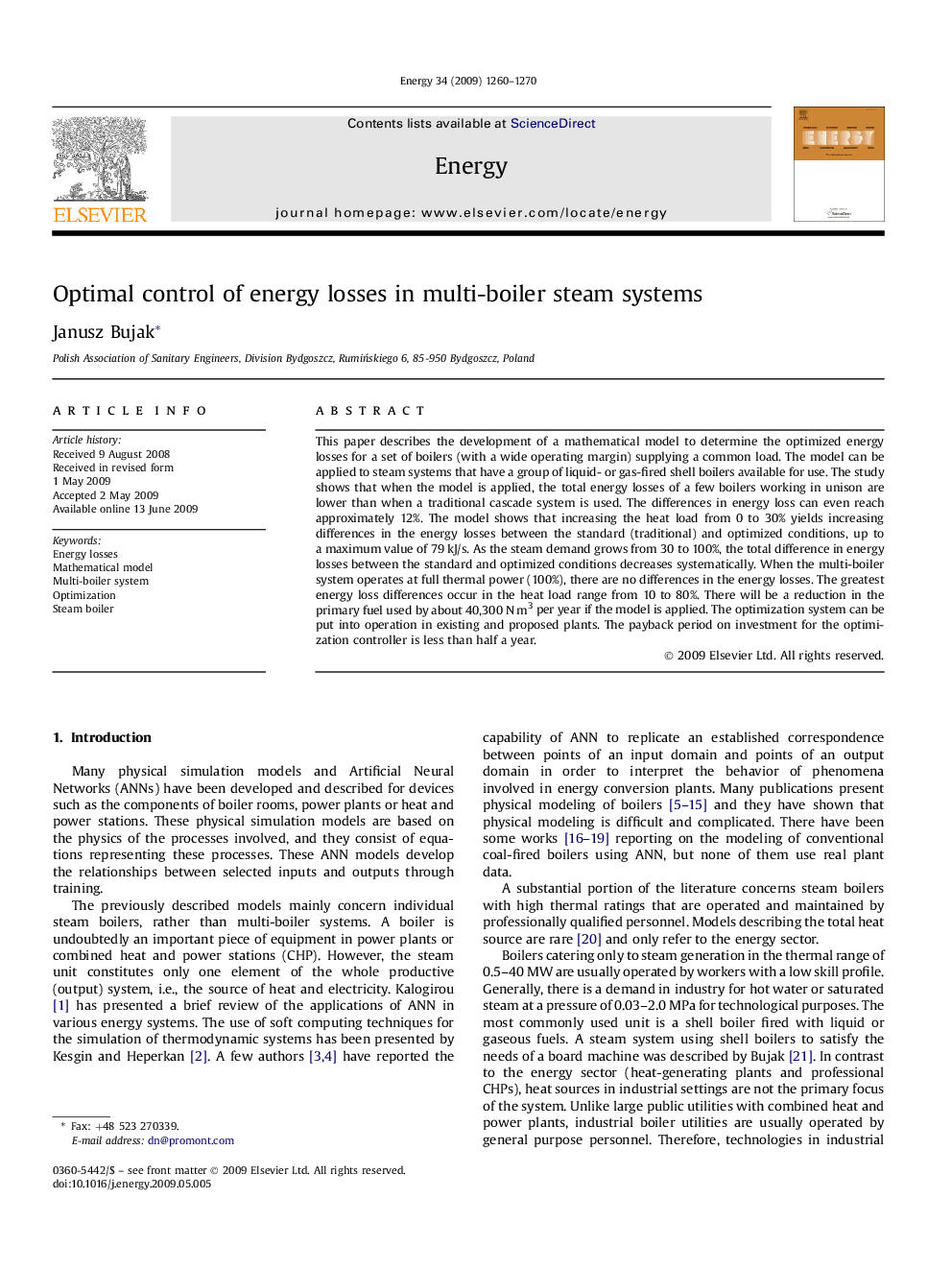| Article ID | Journal | Published Year | Pages | File Type |
|---|---|---|---|---|
| 1734434 | Energy | 2009 | 11 Pages |
This paper describes the development of a mathematical model to determine the optimized energy losses for a set of boilers (with a wide operating margin) supplying a common load. The model can be applied to steam systems that have a group of liquid- or gas-fired shell boilers available for use. The study shows that when the model is applied, the total energy losses of a few boilers working in unison are lower than when a traditional cascade system is used. The differences in energy loss can even reach approximately 12%. The model shows that increasing the heat load from 0 to 30% yields increasing differences in the energy losses between the standard (traditional) and optimized conditions, up to a maximum value of 79 kJ/s. As the steam demand grows from 30 to 100%, the total difference in energy losses between the standard and optimized conditions decreases systematically. When the multi-boiler system operates at full thermal power (100%), there are no differences in the energy losses. The greatest energy loss differences occur in the heat load range from 10 to 80%. There will be a reduction in the primary fuel used by about 40,300 N m3 per year if the model is applied. The optimization system can be put into operation in existing and proposed plants. The payback period on investment for the optimization controller is less than half a year.
